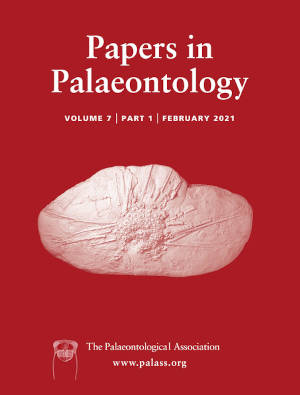Reg. Charity No. 1168330

Relatively few Hirnantian (Late Ordovician) crinoids are known, and none has been previously described from the palaeocontinent of Baltica. This has impaired our ability to understand the patterns of extinction and biogeographic dispersal surrounding the Late Ordovician mass extinction, which triggered a major turnover in crinoid faunas. Here, we describe Tallinnicrinus toomae gen. et sp. nov., an anthracocrinid diplobathrid from the Hirnantian of northern Estonia. Tallinnicrinus is the youngest member of the Anthracocrinidae and the first representative of the family to occur in Baltica. Morphologically, Tallinnicrinus is unusual in that the radial and basal plates are in a single circlet of 10 plates, similar to the anthracocrinid Rheocrinus Haugh, 1979 from the Katian of Laurentia. Phylogenetic analysis further confirms a close relationship between Tallinnicrinus and Laurentian anthracocrinids, suggesting biogeographic dispersal of the lineage from Laurentia to Baltica during the late Katian or early Hirnantian. The occurrence of this new taxon establishes that the family Anthracocrinidae survived the first pulse of the Late Ordovician mass extinction. However, the lineage remained a ‘dead clade walking’ because it failed to diversify in the wake of the end-Katian extinction and ultimately went extinct itself by the end of the Ordovician.